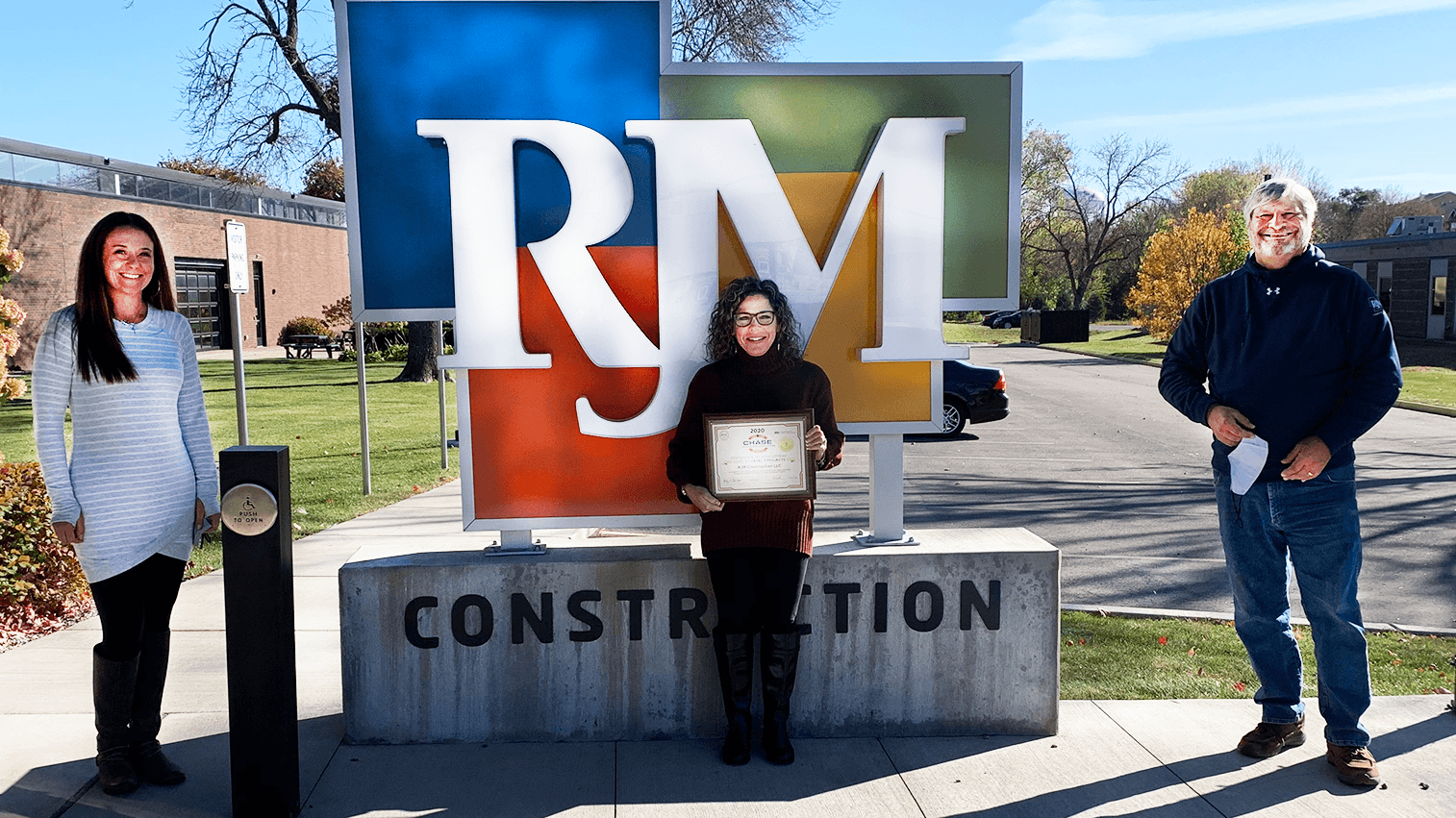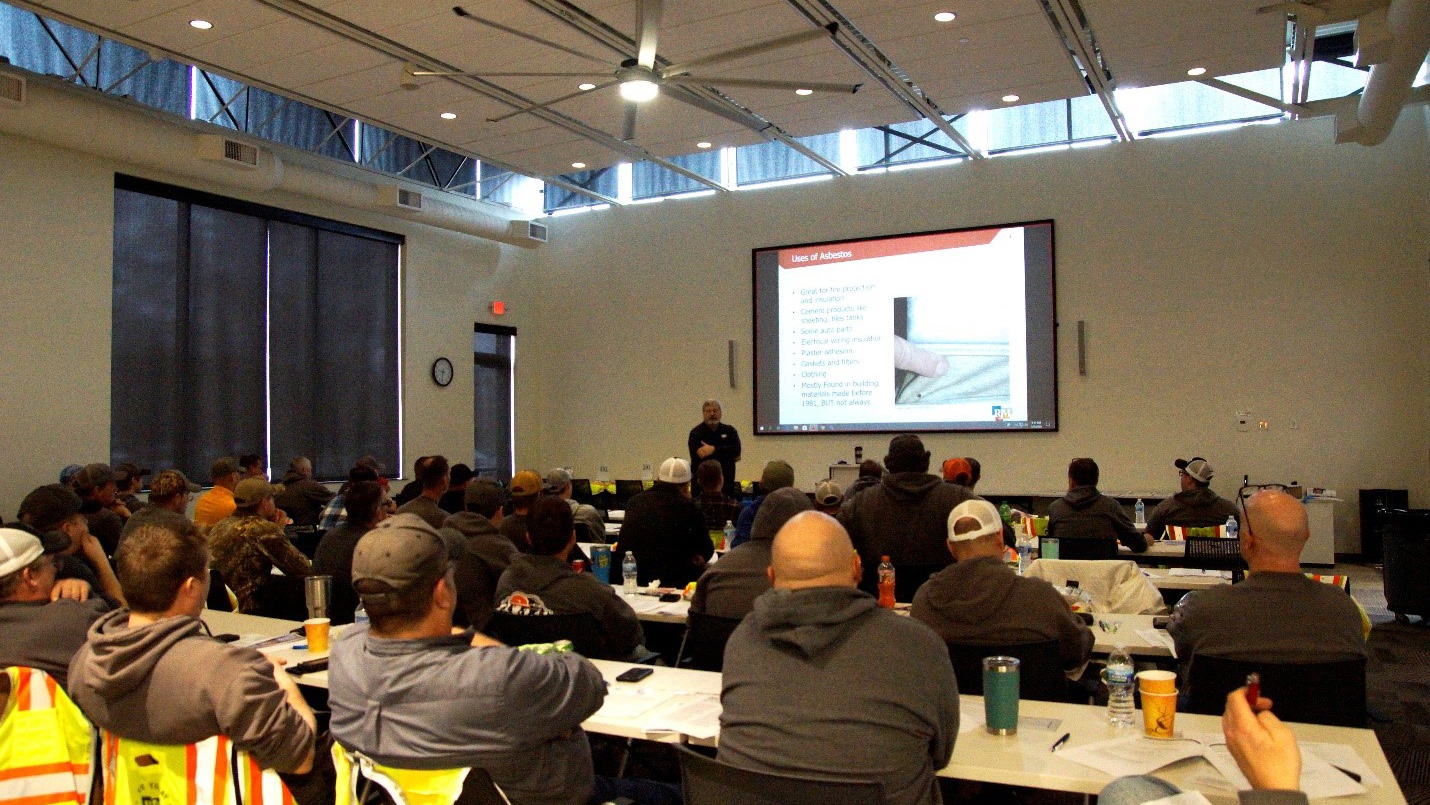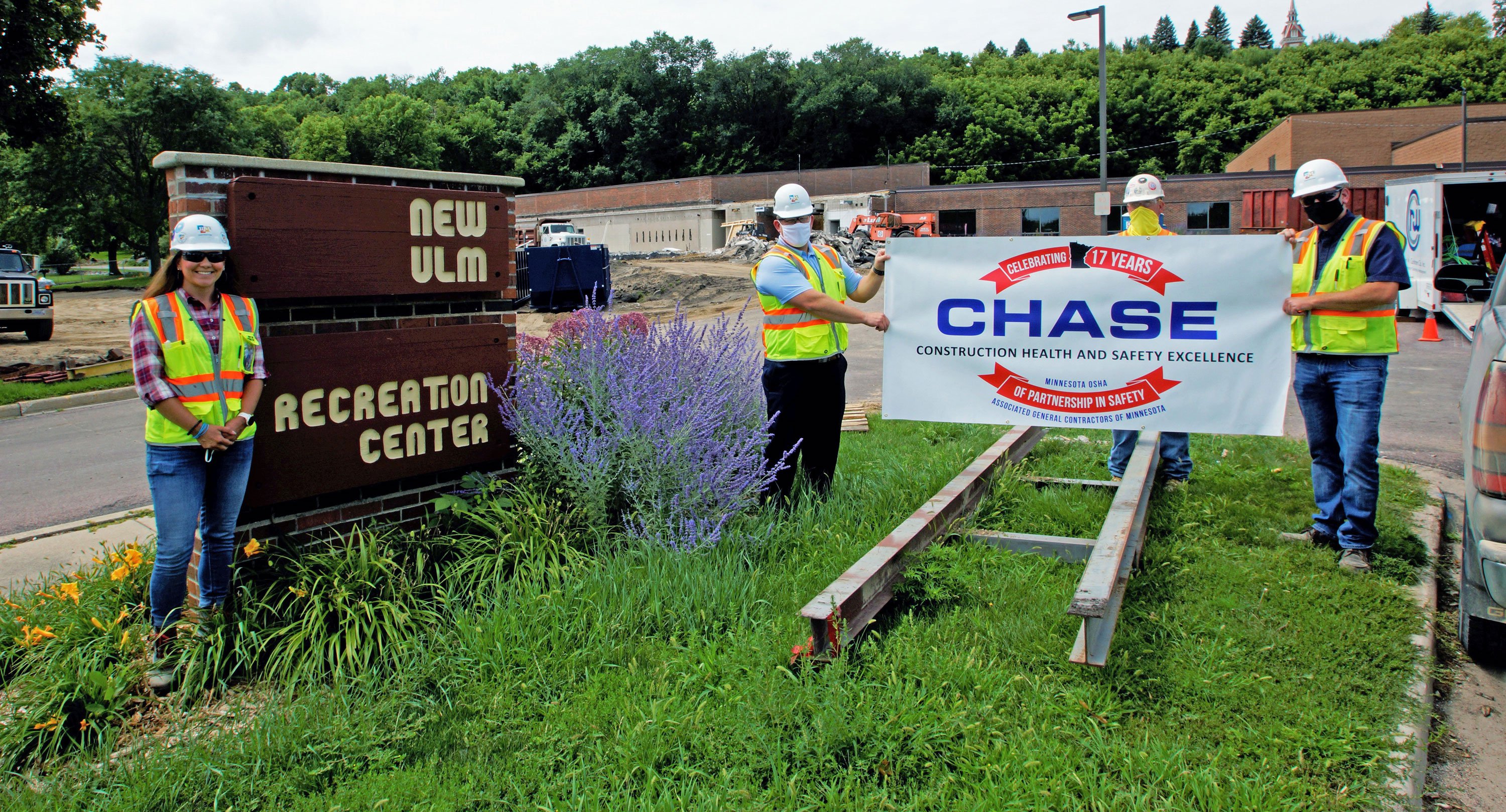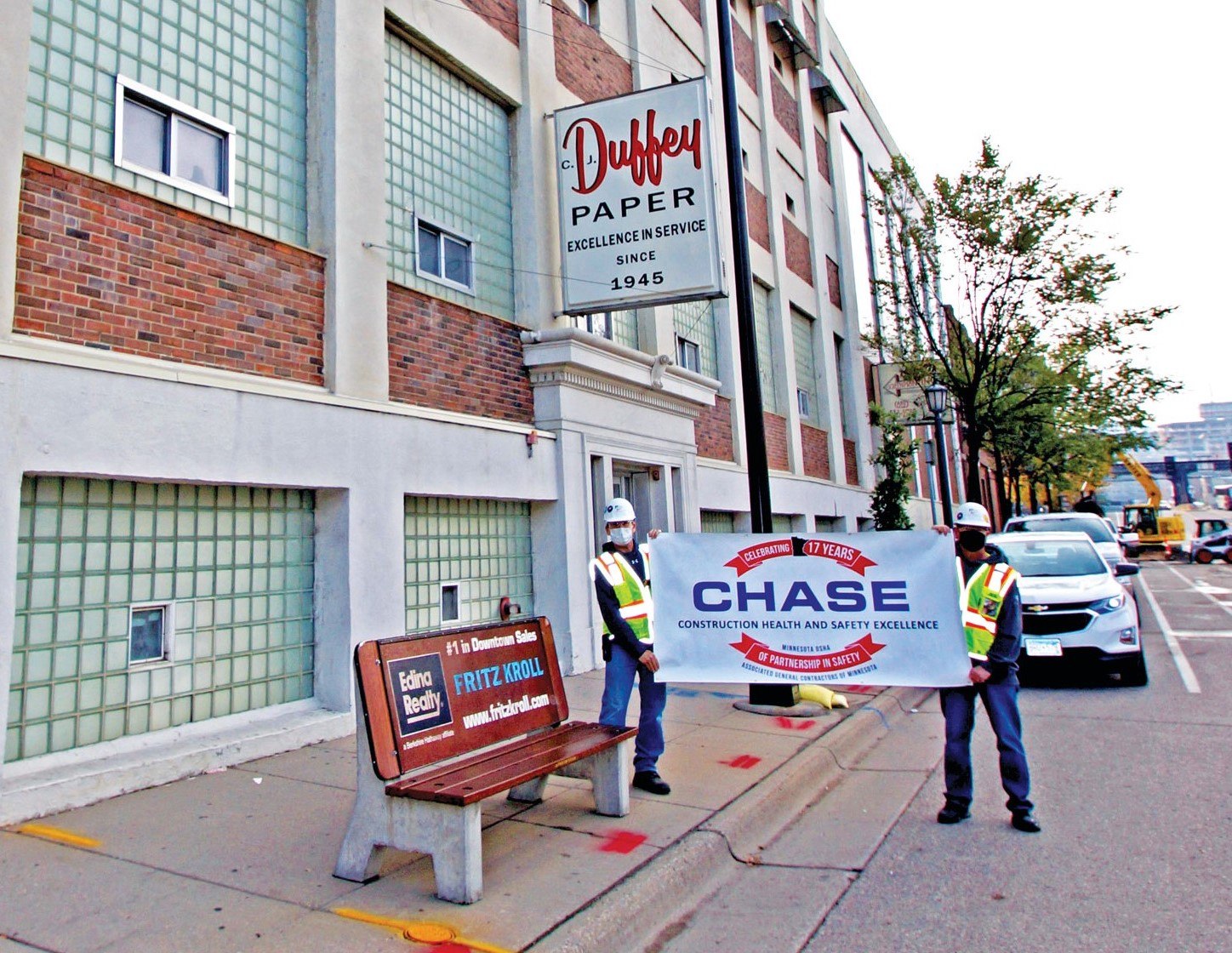
By Maria Manske, Marketing Manager
At RJM we know that project success is not possible without strong safety and quality standards. RJM’s John Boben, who recently stepped down from his role as Vice President – Director of Safety and Quality, has been with RJM for over 20 years leading our team in building our safety program. This year as he moves into a different role as Field Safety Coordinator, we are celebrating John’s proactive efforts working to build a culture of safety at RJM, while taking a peek back at his construction career.
Over the years his close engagement with industry partners including the Association of General Contractors (AGC) and his attention to Minnesota Occupational Safety and Health Standards (OSHA) requirements has helped RJM achieve many safety milestones, all of which have contributed to an increasingly strong safety record, recognition, and overall project success.
John and I talked about his early days in the industry and his path to the safety role, the evolution of RJM’s safety programs, and some of the changes he’s seen since the mid-90s. He also shared his thoughts on the impact of COVID-19 and offered advice to anyone who is about to embark on a construction career path.
What did you do in the early years of your career? During that time, what did the construction world look like before many of the common safety standards and regulations we now take for granted were enforced?
I started out in the ‘70s as a mechanic in the road construction industry. OSHA was new at the time, and regulations were limited and not enforced. We operated on assumptions rather than by rules. (As a side note, it’s interesting to remember that OSHA’s existence was in part driven by the number of fatalities and injuries seen broadly in the workplace, certainly not only construction).
In 1994 I transferred from property management to work in the construction division of United Properties (UP), working primarily on tenant interior projects. I helped to initiate and lead company-wide quarterly safety meetings and went to conferences to gather information and resources. At one such conference on project management at the University of Wisconsin, I picked up a safety manual that had been created in part due to the need to comply with OSHA standards. As the Vice President of General Contracting at UP, I developed the UP Safety Manual. I saw the importance of OSHA’s requirements, and our need to fully integrate them into our daily routines.
At the time when RJM and UP merged in 2008, my role was Vice President of Commercial Construction. In 2010 I jumped into the role of the Onsite Construction Manager for one of RJM’s first major historical renovation projects, the Ford Center. I knew immediately that a project of this size and complexity most definitely required stringent safety standards, and that’s when I first started to understand the true scope and purpose of the safety manual. Just so you know, the manual started out as a 60-page document. Now, it’s 360 pages!
Along with the safety manual, what other areas were developed to build a safety culture?
As the safety manual evolved, working with RJM’s COO Joe Maddy, I emphasized the importance of getting into MNOHSA’s CHASE program. Additionally, RJM’s membership with the AGC with its educational opportunities and resources helped us to improve our game all-around regarding safety. We strived to get increasingly better safety ratings and having a goal along with clear guidelines (the manual) and standards (from OSHA) – all aligned to build our program. During this time, I diligently researched and observed successful safety efforts and programs in our industry. Again, the AGC was a vital resource in this area, and I am grateful for their partnership.
Since that time, can you name a significant safety milestone?
There are almost too many to count – each year we’ve seen more progress. Step-by-step we worked to build our safety program, and in the end, I think the numbers don’t lie. When I began working in a safety role, our injury incident rate hovered around 10. Last year we were at 1.8. We did this by developing a comprehensive safety program that went from average to best-in-class.
Describe how RJM’s safety program evolved.
Early on we saw the value in paying closer attention to OSHA’s standards and requirements as they began to expand into more areas and become more stringent. We’ve come a long way from being simply reactive to proactive! Now, in many ways, safety drives how and when we execute certain steps. Previously, we relied only on union training and toolbox talks. Gradually, with OSHA’s guidelines and AGC’s engagement, we developed a comprehensive program involving all team members, including in the office.
What are some of the initiatives and components of the safety program?
It’s a long list! One of the key areas that made a difference is that we saw a need to provide training on a regular basis, working together with OSHA and AGC. Our relationships with these industry partners helped us to embrace best practices and articulate their importance to our teams. While it begins with each individual, safety on the job means so much more. It depends on the entire team and impacts overall project success and client satisfaction.
RJM’s safety training program includes:
- Comprehensive safety manual available to all field staff both in hard copy and electronically, continually updated
- Job site and new employee safety orientation program available virtually as a part of the new hire onboarding process
- All project managers, foremen, and superintendents are required to complete OSHA 30 training
- Regular Safety Day training covering diverse topics given by experts in the field
We also developed stronger communications platforms by holding regular meetings with foremen, and by utilizing the company intranet for 24/7 accessibility to critical safety information. Across the board, we started to do safety assessments conducted by team members, from project executives to project engineers and foremen. We also expanded the weekly toolbox talk to include videos and individual testing.
RJM’s Safety Committee, comprised of individuals across departments, worked to engage our teams on any new initiatives or requirements. We also invested in resources including the upgrading of safety equipment and added safety awareness as a part of the RJM brand with the slogan, “Safe Today, Here Tomorrow.”
Are there any lessons learned from COVID-19 that will impact safety standards going forward?
While over the years we have built a proactive versus reactive safety culture, COVID-19 reminded us that we need to be prepared for anything. Our team quickly developed a Task Force that includes staff from all areas of the company, and safety quickly developed a communication plan with field staff to provide and enforce COVID-19 protocols. This initiative is ongoing, and should a similar emergency happen again, I feel that we developed a successful model to manage it.
Long term, I feel that with the use of masks and our health screening protocols, we’ve seen an overall reduction of people sick on the job or sick days thatare taken. Some of these protocols are worth hanging on to!
What safety advice would you give a recent graduate who is about to start their first job in construction?
Spend as much time as you can walking job sites and understand safety requirements. Utilize the availability of safety team members and learn from them. They can help you learn what to look for, and most of all how to prevent near misses. Having this knowledge will go a long way no matter your position in the industry.
Do you have a favorite quote?
Only one person invented the wheel. Everyone else just modified it.
When (if?) you retire, what is the one thing you are most looking forward to?
I have a daughter and grandchildren who live in Fargo, ND, and another daughter who lives in Portland OR. We would like to travel and spend more time visiting them and seeing the many wonderful sights our country has to offer.
We were very pleased when John accepted the challenge to be the Safety Director. His experience combined with his get-it-done approach and strength in providing direction made him a natural for the position. He was instrumental in developing positive relationships with the MN OSHA and AGC safety collaboration leaders and programs (CHASE.) These relationships and John’s leadership led RJM to much higher levels of safety awareness and practices.
John has always been long on talent and never short on tasks as he continues to identify safety training opportunities and communications . . . I would like to congratulate John on his achievements and dedication to the construction industry.



